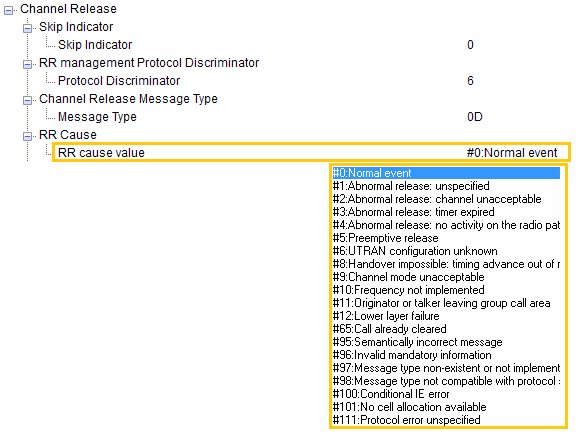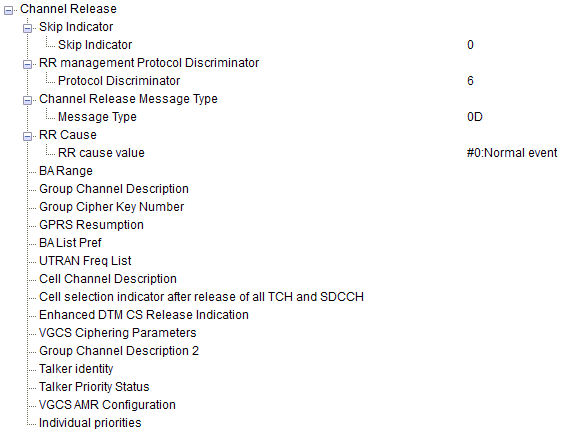|
2G/GSM |
||
|
Channel Release
GSM Channel Release is performed based on 44.018 3.4.13.1.1 Channel release procedure initiation in dedicated mode and in group transmit mode.
When to use ?
What UE is supposed to do after it received Channel Release ?
UE starts timer T3110 and disconnects the main signalling link. When T3110 times out, or when the disconnection is confirmed, the mobile station deactivates all channels, considers the RR connection as released, and returns to CCCH idle mode, returns to PCCCH or CCCH packet idle mode or enters packet transfer mode.
Channel Release Cause
There are many release cause as shown below, but only some of them are described in 44.018 3.4.13.1.1. I will keep adding more description as I find.
Important IEs in Channel Release
Following is overall structure and IE (Information Elements) carried by Channel Release.
BA Range : a mobile station may use this in its selection algorithm (see 3GPP TS 45.008 and 3GPP TS 23.022). Cell selection indicator after release of all TCH and SDCCH : a mobile station may use this in its cell selection algorithm after release of all TCH and SDCCH (see 3GPP TS 45.008) Individual priorities : a mobile station may use this to convey individual priorities information to the MS (see subclause 3.2.3.3). When the MS receives an Individual priorities IE it shall start an instance of timer T3230 with the value supplied in the Individual priorities IE.
|
||

